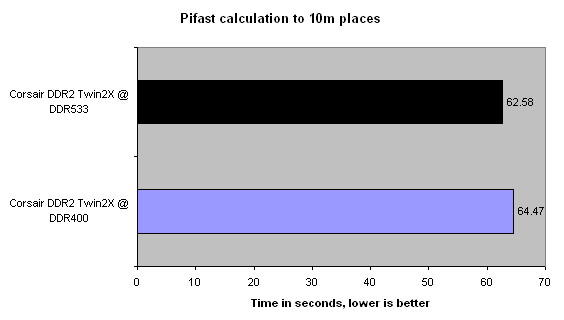Memory tests
Let's take a look at memory bandwidth first. Common sense tells us that it should be higher for DDR533 memory, but with an Intel Pentium 4 560 Prescott only able to use a theoretical 6.4GB/s with a 200MHz FSB, will DDR533 provide meaningful gains over DDR400?.
The answer is a resounding yes. ScienceMark2 reckons DDR533 provides a touch over 10% more bandwidth than DDR2 running at an effective 400MHz. So it's always preferential, with respect to Intel's 900-series chipsets, to run with as high a memory speed as possible. Higher RAM speeds, ceteris paribus, shorten the time taken for a data to flow from main memory to the processor.

The surprising aspect is that 533MHz DDR2 memory is reckoned to run with a substantially lower latency than when run at 400MHz. Reducing RAM-to-CPU latency can have enormous benefits for overall performance. Just look at how strong AMD's Athlon 64 range of CPUs, with their on-chip memory controllers, are in this respect. We'd expect overall latencies of no more than 45ns from a tuned Athlon 64 setup.
DDR2 running at 533MHz provides both higher bandwidth (expected) and lower latency than the same modules at 400MHz. It's easy to that benchmark performance will be greater in the former case. Running Pifast, our resident constant calculator to 10m places, will show just how much better it is.

The performance difference from running one speed of memory to another manifests itself with a 2-second faster time. That's a significant, important speed increase resulting from a simple change within BIOS. It's already clear that potential 900-series chipset buyers should look towards DDR2 533MHz memory as a minimum RAM speed.









